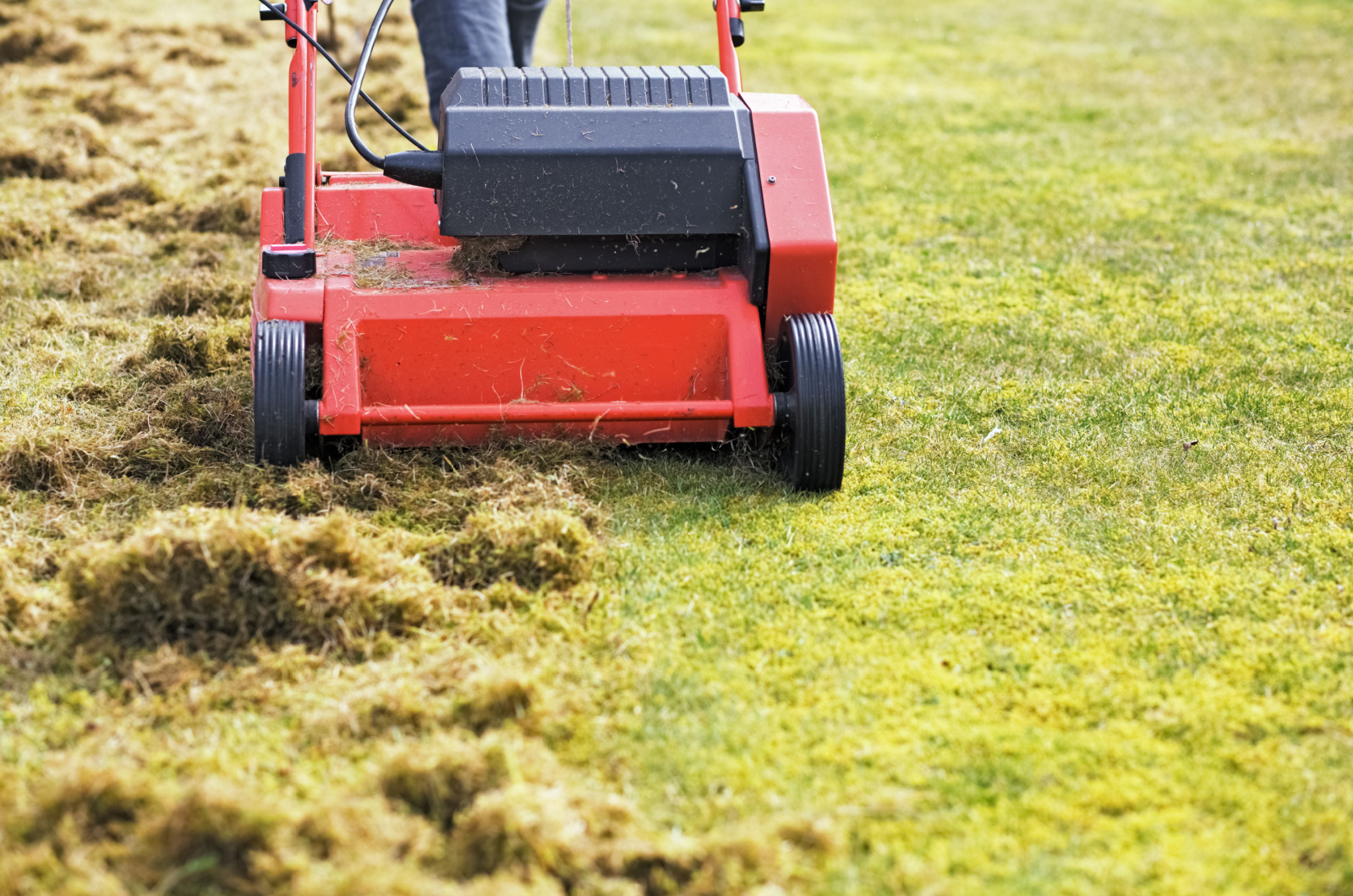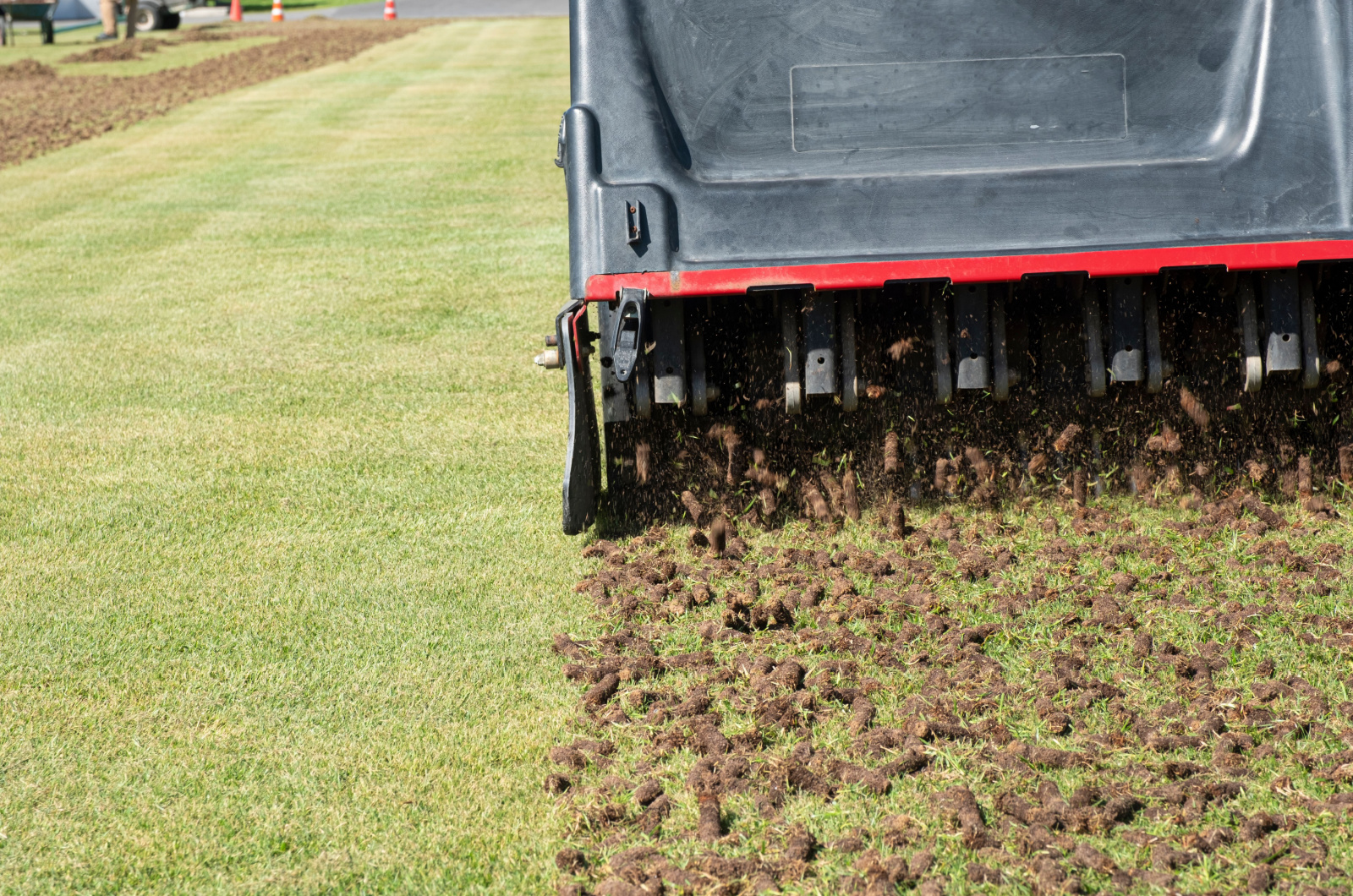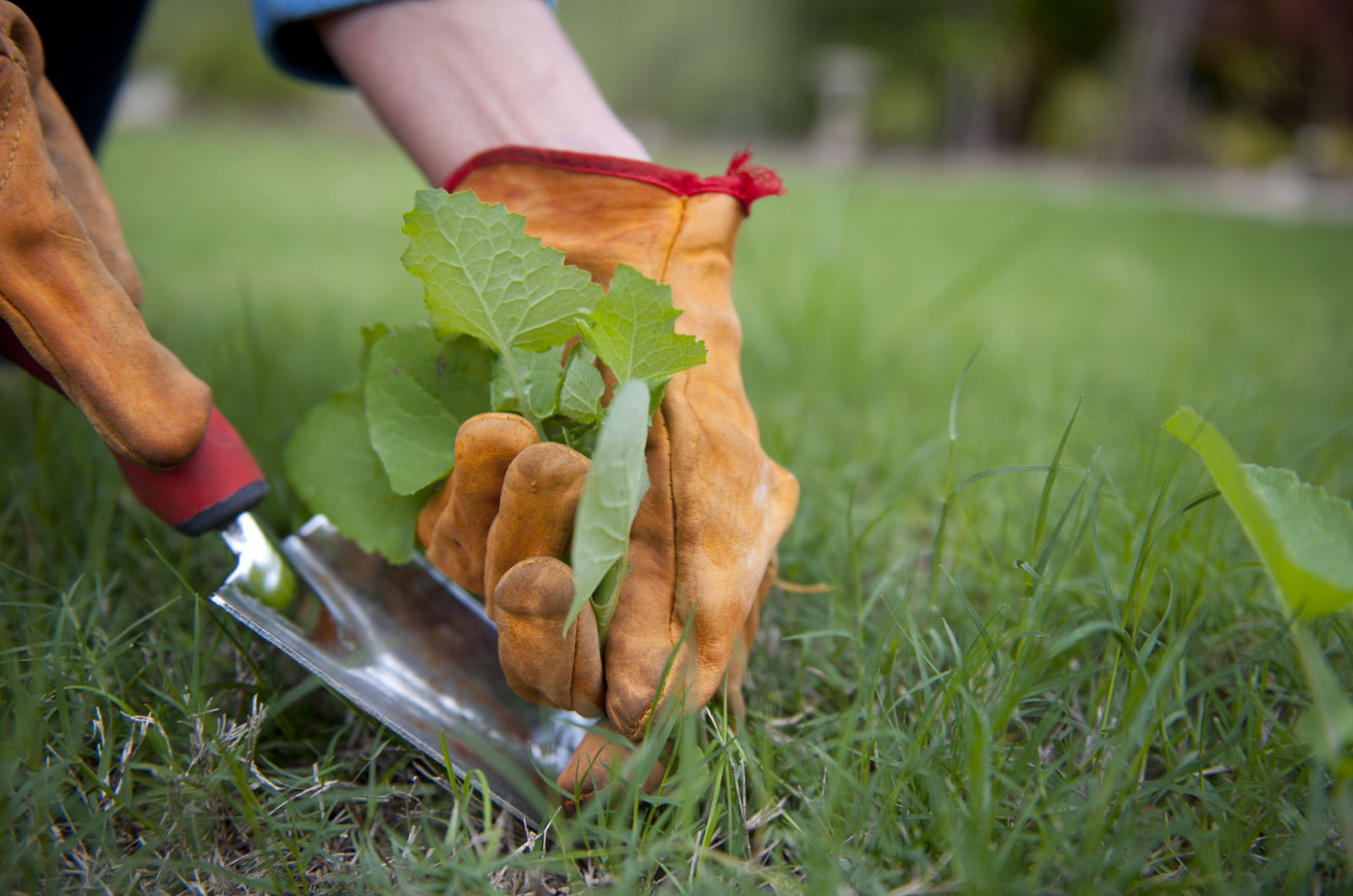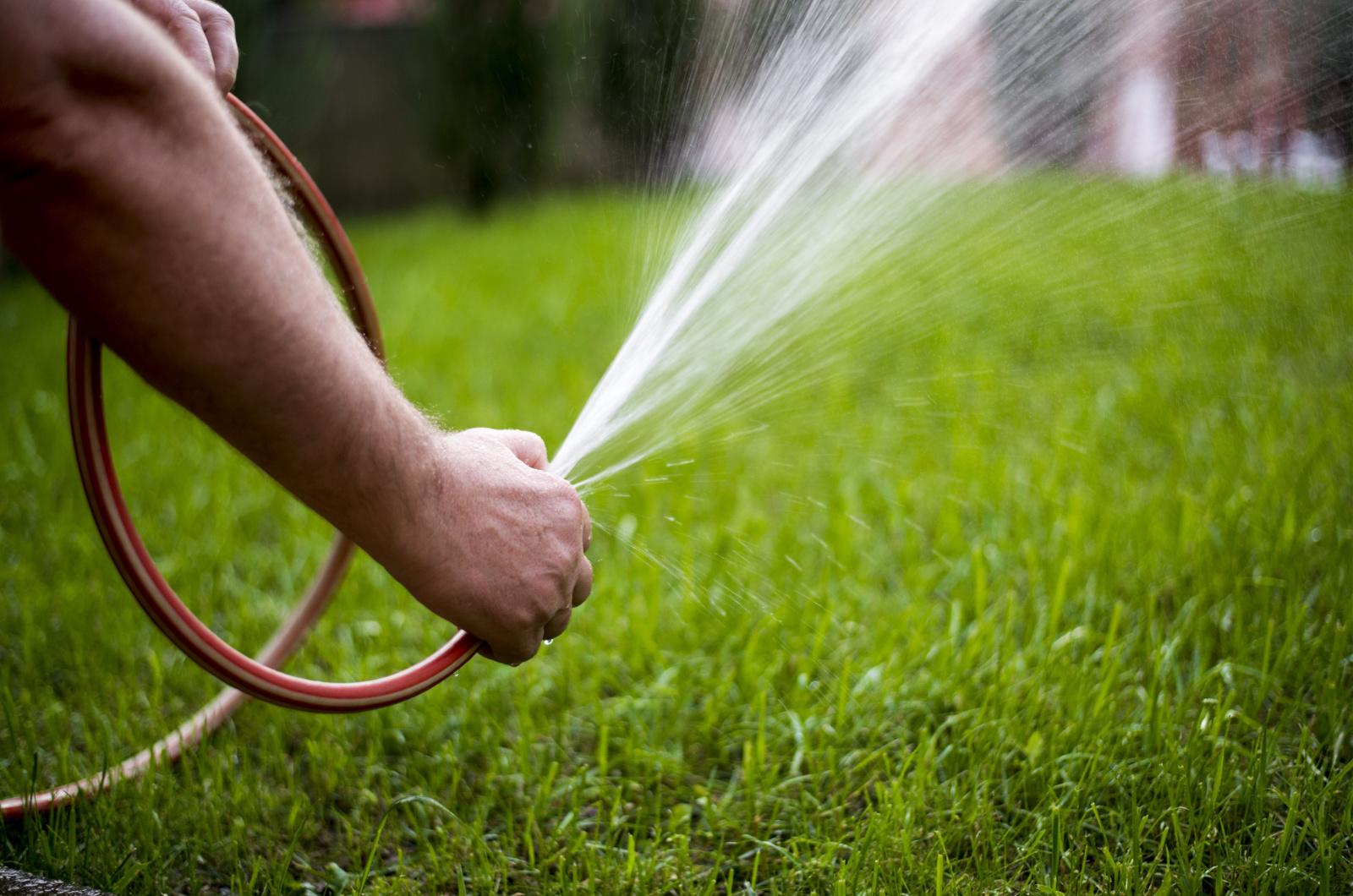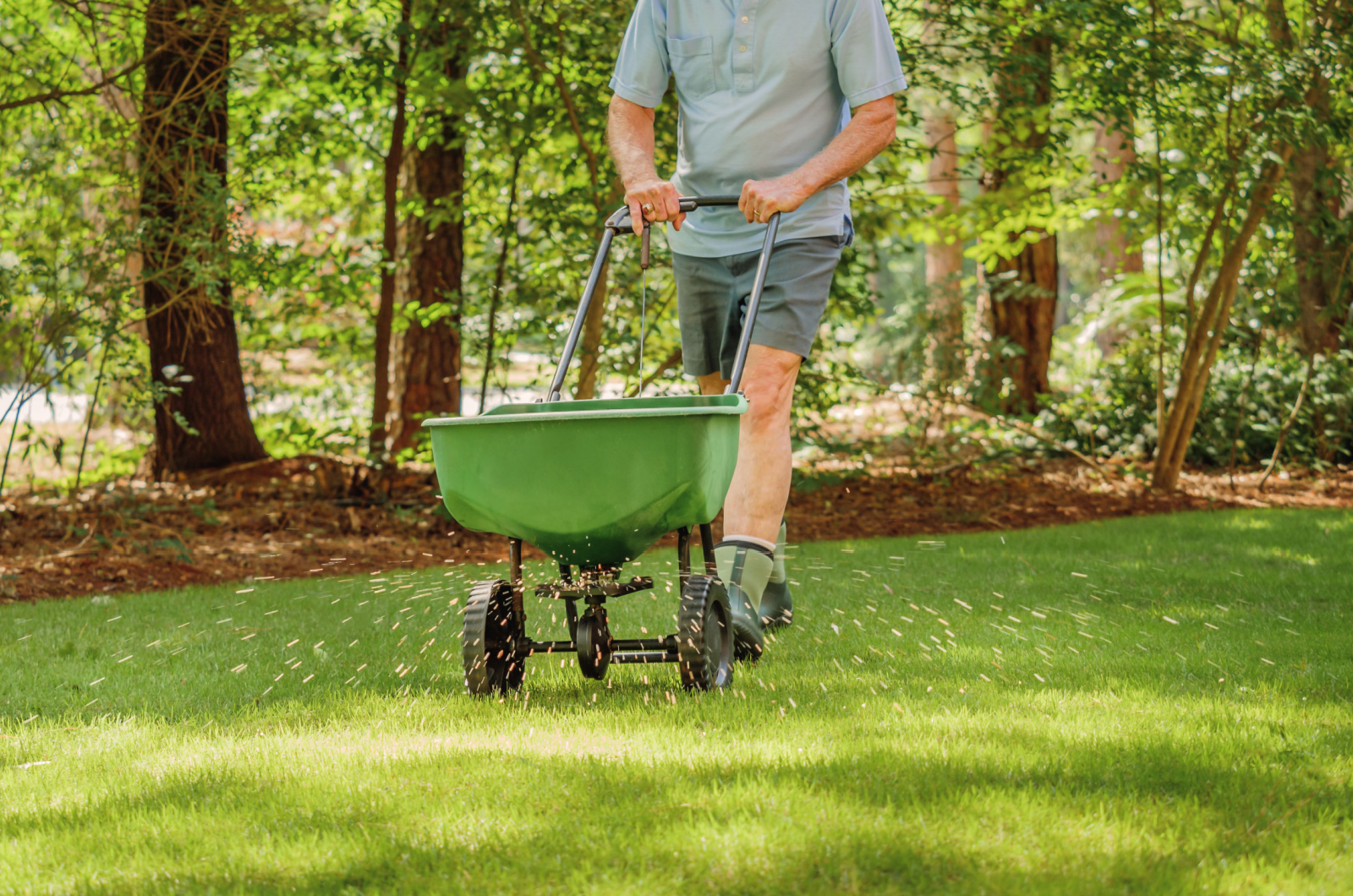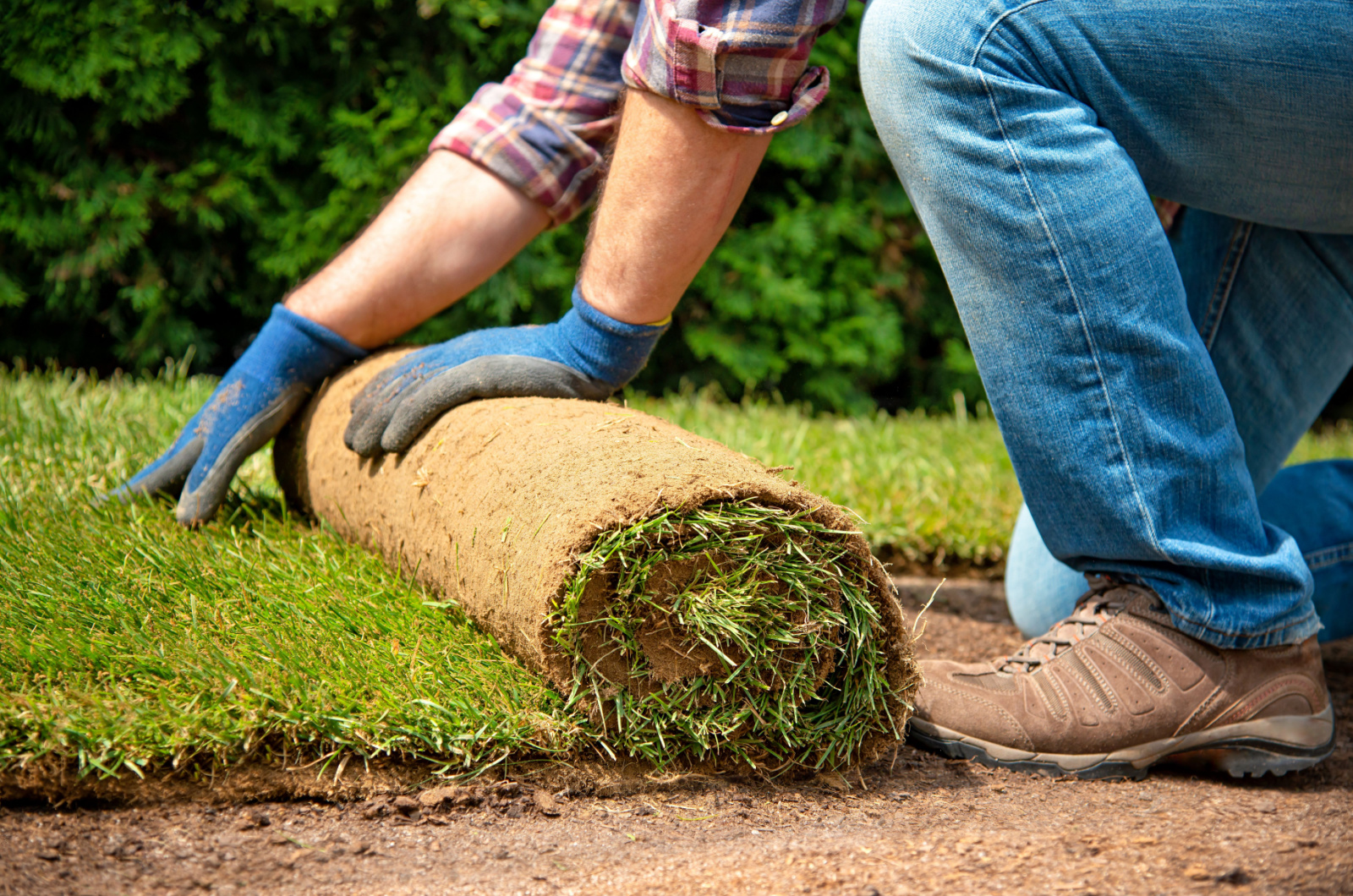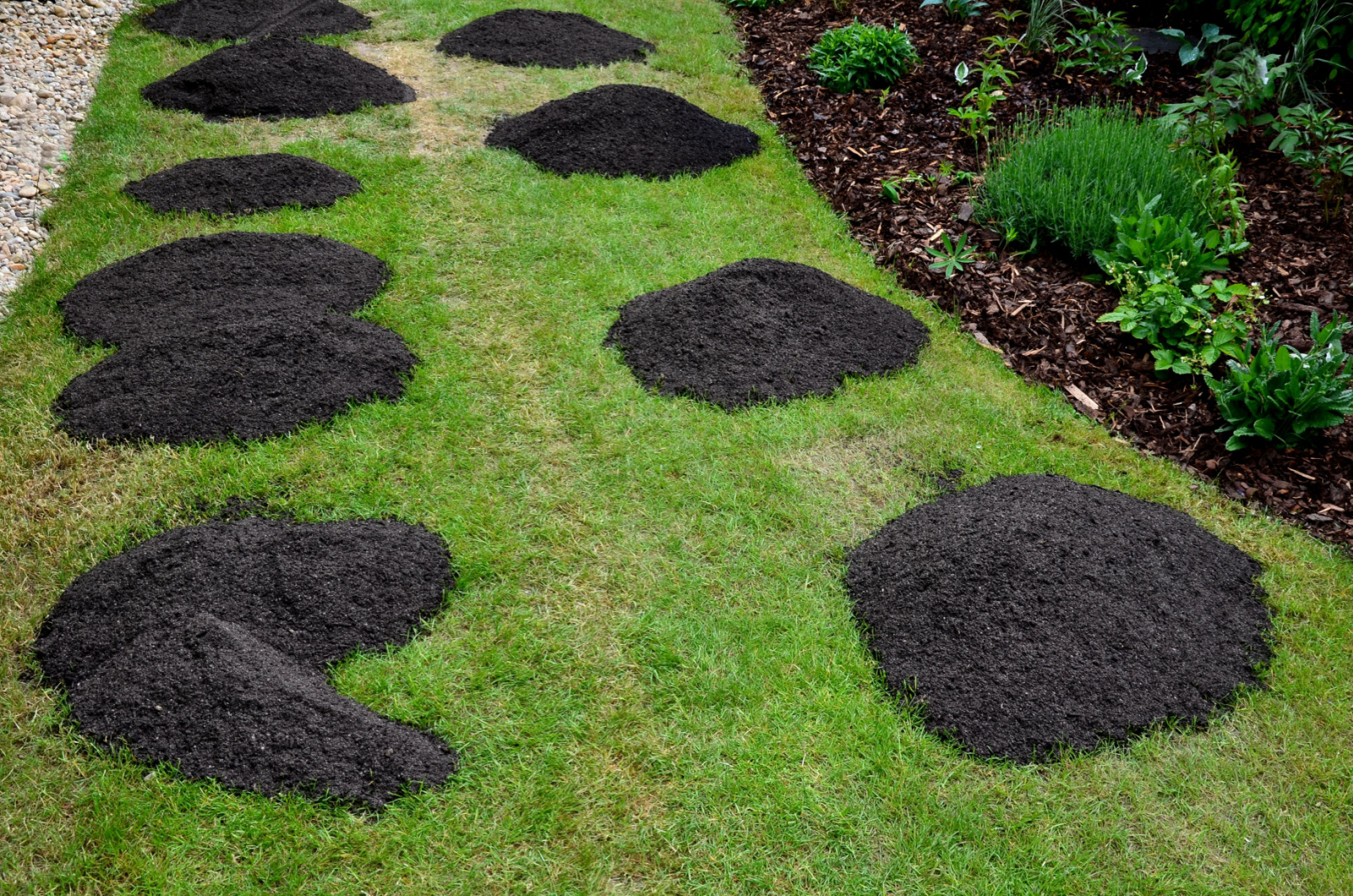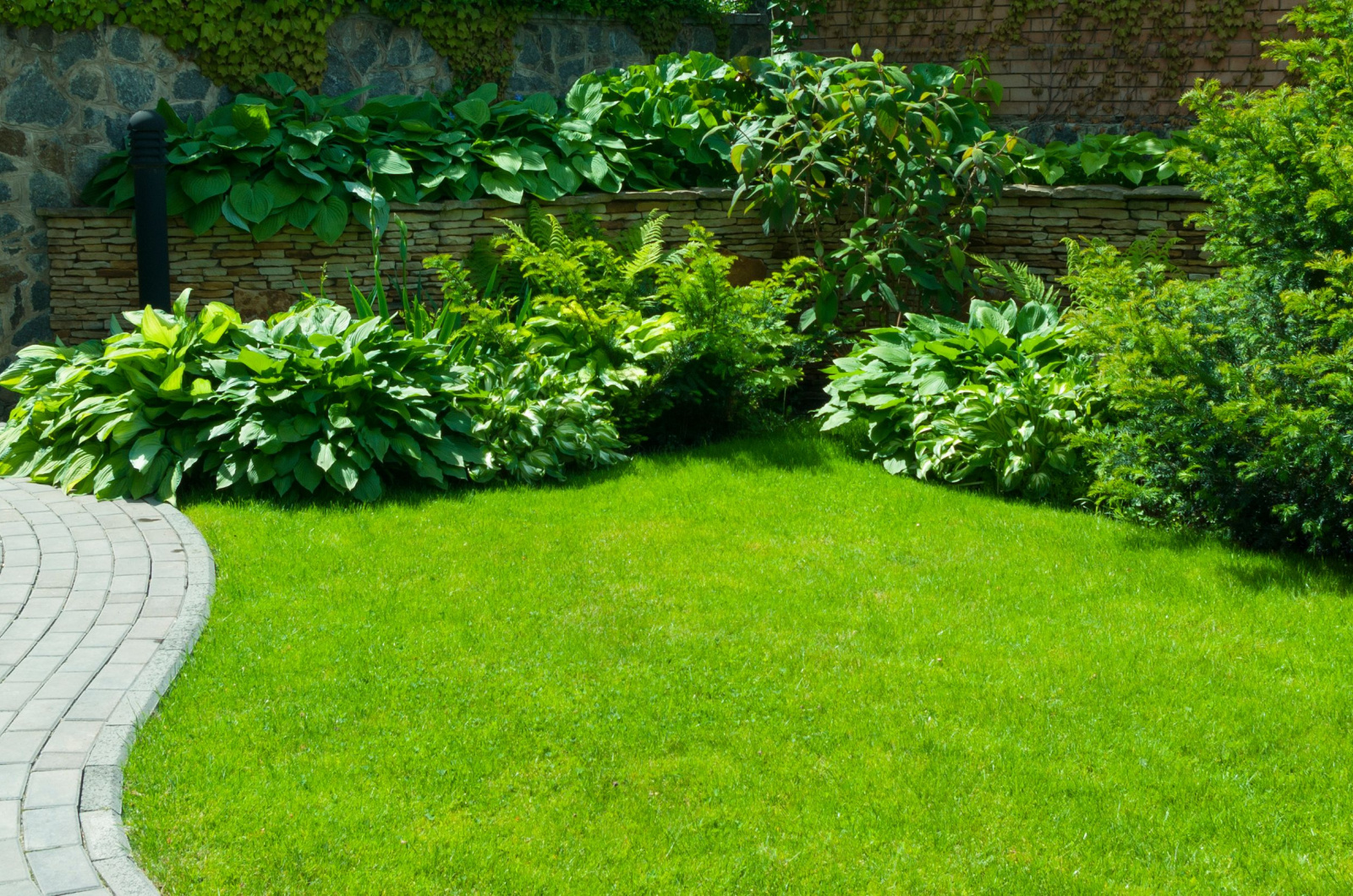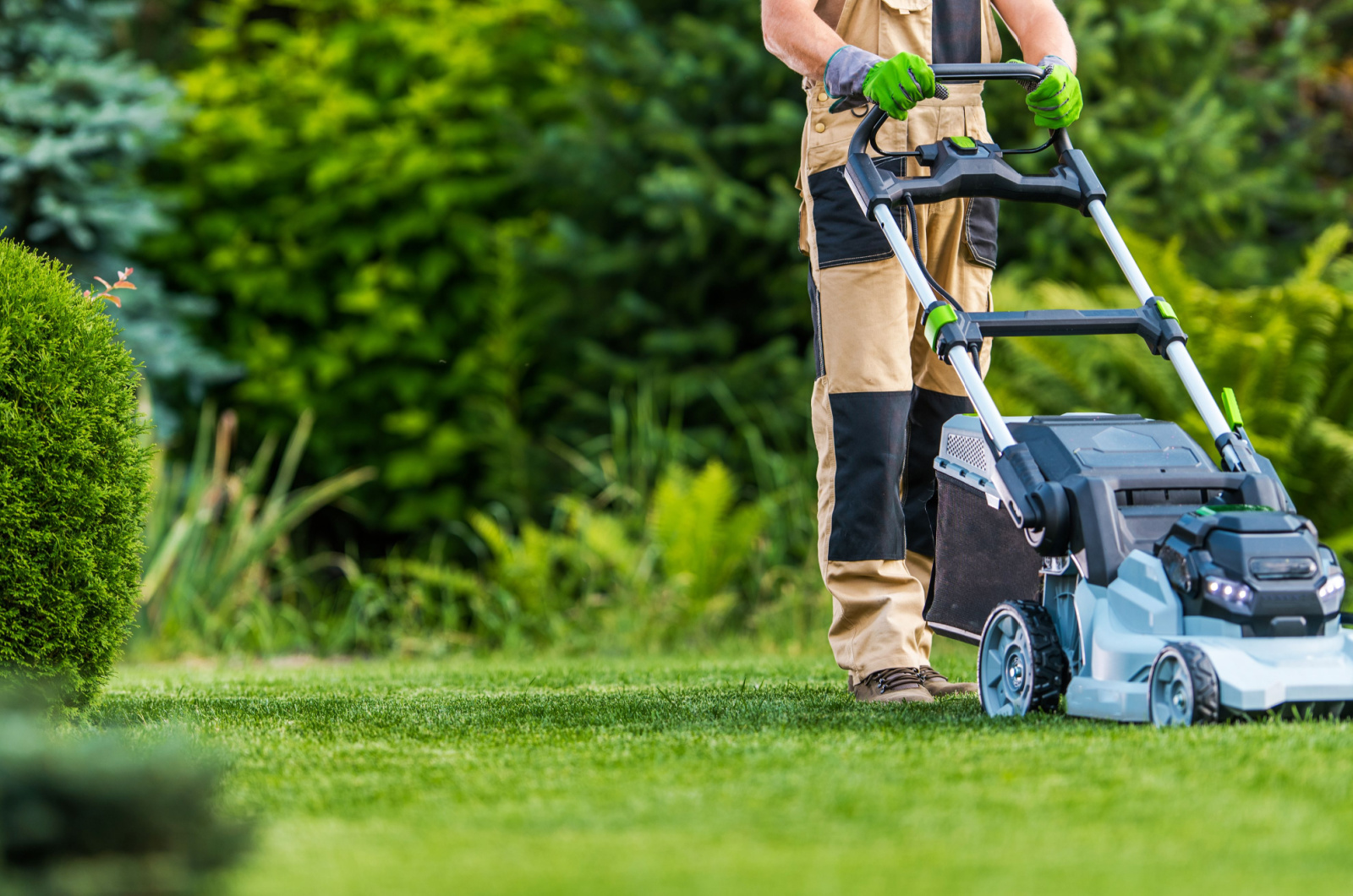We’re well into fall now, and it’s high time to assess the damage summer has done to our lawns. A combination of heat, drought, and personal neglect (let’s face it, we’ve all done it), has done a number on our green front yards!
However, there are things you can do to revitalize your lawn and make it green and thick again.
I will cover 9 amazing tips that can heal your lawn in time for winter and prepare it for this season.
Let’s get started!
Dry vs Dormant Lawn
Before you start winterizing your lawn, you first have to discover whether it really is dry or if it has just gone dormant.
The best tell is the pull test. Take a piece of grass and tug it. If it easily comes out, your grass is dead and you should repair it. Another way you can tell your grass is dry and dead are distinct dry circles or patches of brown.
On the other hand, if you feel some resistance when tugging your grass, you know that it’s just dormant and will obtain its lush green color if you follow the tips below.
#1 Dethatch Your Lawn
The first thing you should do to your lawn is dethatch it. This is one of the least invasive processes as you’re only raking it to remove the decomposing materials on top of it.
This method will ensure air and moisture can penetrate your lawn and prevent it from browning and drying out.
Of course, there are pros and cons of dethatching the lawn. That means that if you’re not careful, you can damage your grasses in the process. Dethatching can also lead to faster drying out, so make sure to irrigate your lawn regularly.
Finally, you don’t have to rake your lawn every couple of days. For instance, only dethatch your lawn if the layer of decomposing leaves or clippings is thicker than half an inch because it can prevent oxygen and moisture from reaching the roots.
Thick thatch can also make your lawn more susceptible to lawn diseases and pest infestations, which is why it’s a good idea to remove it if it gets too thick.
#2 Aerate The Soil
Just like thatch that builds on your lawn, heavy and compact soils can prevent oxygen and moisture from reaching grass roots, eventually drying out and even killing your lawn.
That’s why many homeowners turn to aerating. It punctures targeted holes in your lawn and allows moisture, nutrients, and oxygen to get to your grass taproots.
Of course, there are some things to do after aerating the lawn that will make this process much more beneficial, such as overseeding, fertilizing, letting your lawn rest, etc.
#3 Destroy Weeds
There’s a never-ending question in the landscaping world, and it goes something like this: How to remove weeds from your lawn?
They can quickly invade your lawn, steal moisture and nutrients from your grasses, and choke them out in an instant.
Luckily, getting rid of weeds isn’t that demanding. My preferred method is pulling them out by hand, although you have to do this before they have spread a lot and make sure to take out the entire root system.
You can also turn to herbicides or natural weed killers if this technique is too cumbersome for you or you want to invest your time elsewhere.
#4 Water It Properly
A dry lawn is a sure sign of underwatering, so you’ll have to irrigate it thoroughly to bring it back to life.
The best practice is to irrigate your lawn in the early hours of the day or late afternoon so that it has time to drink all the moisture it needs before it evaporates.
You can get a sprinkler system or use a garden hose and soak your lawn for about 45 minutes or so when watering.
Another thing you should be aware of is knowing how often to water grass seeds. Irrigate your lawn before and after planting seeds and keep it moist until it establishes.
#5 Fertilize Your Lawn Grass
If you want to revitalize your lawn, you’ll have to fertilize it from time to time. But make sure to use the right plant food.
Nitrogen is one of the most important nutrients for lawns, so always go for fertilizers rich in this nutrient.
Some say that phosphorus is also crucial, but the truth is that many states ban the use of phosphorus on lawns because it can run off into the nearby waters and contaminate them. And there’s usually enough of it in the soil.
There’s also an ingredient that will turn your lawn deep green, but you have to use it wisely. I’m talking about chelated liquid iron fertilizer, which will do wonders for your lawn when applied in summer and watered afterwards.
However, don’t fertilize your lawn until you’ve done a soil test to see what nutrient your grass needs; it could be nitrogen or iron, you never know.
#6 Overseed Or Lay New Sod
Planting grass seeds on an existing lawn isn’t that difficult and can improve the appearance of your lawn by and large.
But there are some things you should do before planting new seeds, such as dethatching, aerating, and mowing. Then, spread the seeds, press them into the soil, and cover them with a thin layer of compost, coco coir, or even peat moss.
Of course, this process takes time, but you can always lay new sod if you don’t want to wait. These “grass patches” come in rolls and you only need to lay them over the bare patches – like plugs.
#7 Try Top Dressing
One way to get rid of bare patches is to top dress your lawn. This will keep it moist for longer, help it retain nutrients, protect the new grass seeds, and help with overseeding, etc.
You can use compost, coco coir, peat moss, or any other organic material you prefer. Of course, there are both pros and cons of using peat moss on the lawn, and even though it can do wonders for your lawn, it is also quite expensive and not eco-friendly.
That’s why you should find a material that checks all the boxes; something like homemade compost or even sand is always a great idea.
It really depends on the type of growing medium you have. Just make sure that you never apply too much or you risk preventing sunlight from reaching your grasses, which can lead to disastrous effects.
#8 Use Different Type Of Grass
If your lawn dies year after year, maybe it’s time to switch things up a bit and get some different grasses.
Some of the best grass types to grow include Bermuda, Zoysia, St. Augustine, Kentucky, and fine and tall fescue grasses.
Of course, you’ll have to choose ones suitable for your area. Here in Florida (and other warm states), we usually sow Bermuda, Buffalo, St. Augustine, and Zoysia Grass. But if you live in northern regions, then fine and tall fescue and Kentucky grass are the way to go.
You should also take the amount of sunlight your yard gets into account when considering the new type of grass. For instance, St. Augustine and Zoysia are suitable for shady lawns in warm regions, while colder climates can rely on tall fescue for shade-tolerance.
And don’t forget about maintenance. If you want a drought-tolerant lawn in a northern state, plant tall fescue. And if you want the same in a southern state, then you can’t go wrong with Bermuda, Buffalo, or Zoysia grasses.
#9 Reduce Mowing
Now that we’re well into fall, we keep asking questions like, what to do to lawns in October? And one thing that differs fall from summer care is reduction in mowing.
Dry and vulnerable grasses are susceptible to damage when mowing them, and you can even kill them if you mow them too short.
Tall grasses are more likely to survive either because they can photosynthesize more, provide more shade to the roots, or simply keep more moisture in the soil.
Of course, there’s still a chance your lawn will recover from hot summer conditions, but mowing it too short in fall will surely not help.
If you really have to cut it shorter, then set the mower settings to the highest level to keep your grasses as tall as possible until they bounce back.
Other Tips To Keep Your Lawn Green
• Don’t cut your lawn too short. 2.5-3 inches tall is the perfect height.
• Mow your lawn every 4-7 days in summer, every 10-14 days in fall, and every 3-4 weeks in winter. Of course, this will depend on where you live and the type of grass you grow.
• Ensure that your soil has excellent drainage so that your lawn doesn’t get clogged with water and infected with root rot.• Water your newly seeded grasses about once or twice per day and reduce this once your lawn establishes and gets around 1-2 inches tall.


